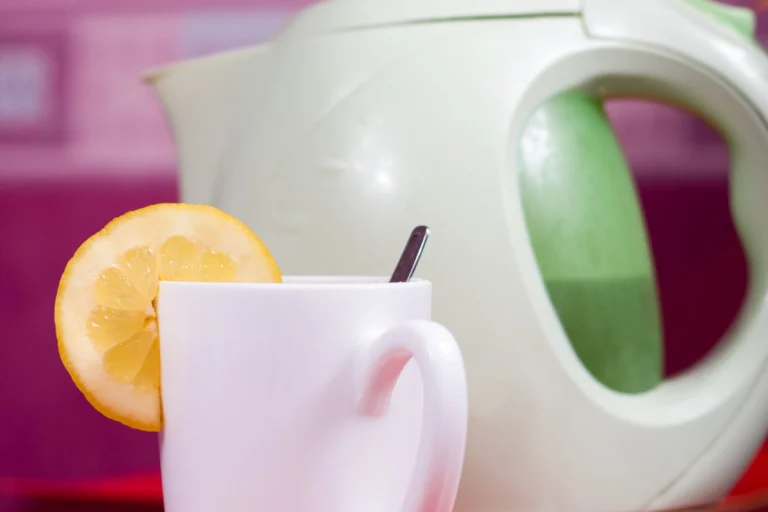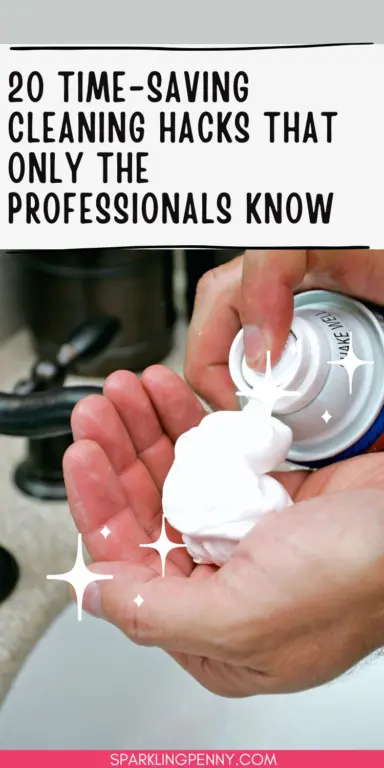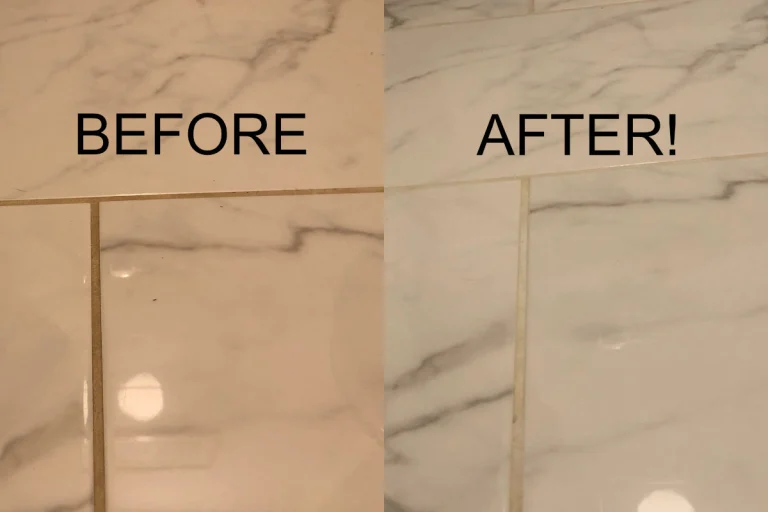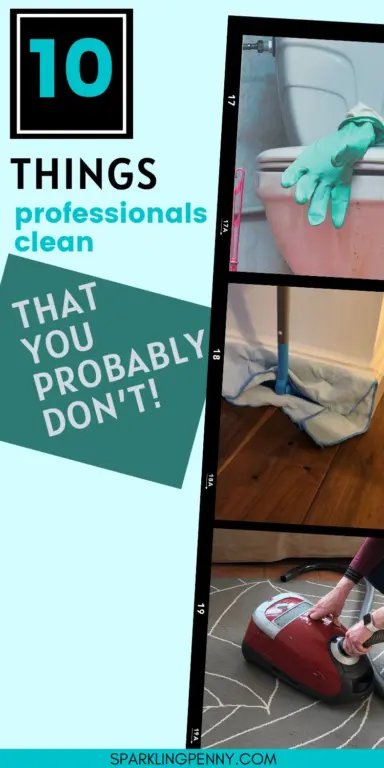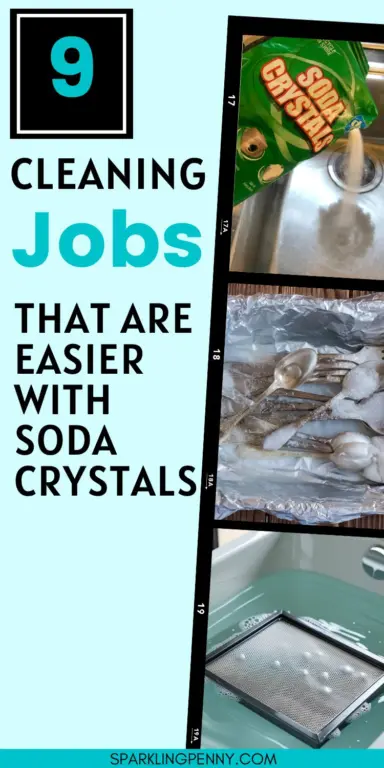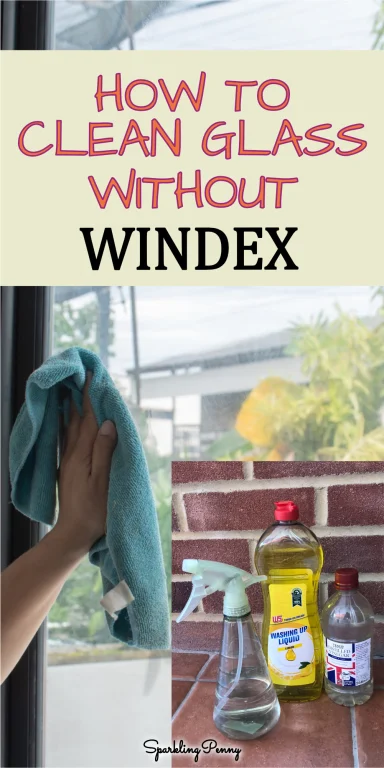Lemons are a godsend. There is so much you can do with a lemon! From cooking, drinking and even cleaning your house, including cleaning the inside of your kettle.
Lemons are naturally acidic. They are also a natural degreaser and have antibacterial properties. It’s their acidity that makes them perfect for dissolving the limescale in your kettle.
Today I’m going to show you how you can use just one lemon to clean your electric kettle inside and out and even descale it. There is no fear of having your first cup of tea tainted with a chemical taste of whatever you cleaned it with. At worst, your first drink might taste a little ‘lemony’.
Heads up: I sometimes use affiliate links. When you click these links and make a purchase, I may get a small commission. It won't cost you anything but it helps me to run this site.
Why clean your kettle?
There are two main reasons for cleaning your kettle of limescale. The first one is to improve its efficiency, and the second is to improve the boiled water quality.
- Clean your kettle to make it work more efficiently. If your kettle is clogged up with limescale, the heating element won’t work efficiently, and you will use more electricity than you need to. If you are looking to save money on your electricity bill, descaling your kettle is a must.
- Clean your kettle to improve the water. A kettle that is furred up too much with limescale will have clumps of minerals swirling around in the water which will end up in your drink.
What is the limescale in your kettle?
Limescale is primarily made up of calcium carbonate. If the area where you live is named as a ‘hard water’ area, it is due to there being a higher count of calcium carbonate in your water than average. This can cause issues with limescale build-up in your appliances including your kettle.
Limescale is natural and does not pose a risk when you drink water with a higher level of calcium carbonate. It can sometimes taste different though. If you are a tea-drinker, you will know what a difference the water can make to your cuppa.
If your water is hard, I thoroughly recommend getting a water filter or having a separate tap fitted for filtered water.
As a tea-drinker myself I find one of these water filters makes a big difference.

How to clean a kettle with lemon juice
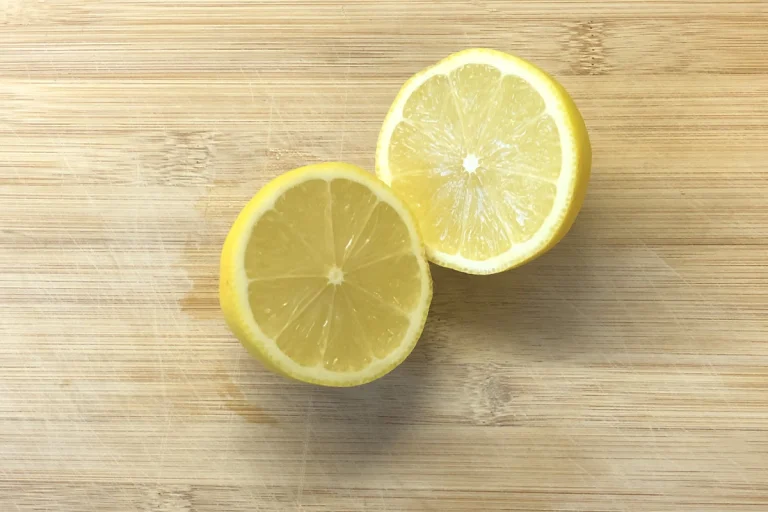
If you have used a store-bought kettle descaler in the past, you will know that it can taint the taste of your hot drinks for a while. I don’t like the thought of the chemicals entering my body through my next few cups of tea. Plus, I’m a very fussy tea-drinker. If you are too, you will know what a big difference the water makes to your tea-drinking enjoyment.
For all of my childhood and some of my adult years, I lived in a very hard water area. Keeping the kettle free of limescale was quite an ongoing battle. Now I live in Sussex and the water is softer, so we don’t have such a problem, but it is still necessary to give the kettle some attention now and then.
Why use a lemon to clean and descale your kettle?
I love to clean as much of my house as possible with the juice and flesh of a lemon. I’m all for anything natural. Lemon is probably as safe a cleaner as you can get.
Similar to vinegar, lemons are naturally acidic which makes them great for dissolving limescale buildup, which of course is alkaline. The two neutralize each other which has the effect of dissolving the limescale.
You can use lemons to descale your kettle, but you can also use them for removing watermarks from your glass shower door.
If you don’t have a fresh lemon spare you can also use bottled lemon juice instead.
You can also use vinegar to clean your kettle (check further down this post for directions). I have lots of posts on this blog that involve using vinegar for cleaning because it is so versatile. But today let’s find out how to use fresh lemon or bottled lemon juice to clean and descale your kettle without using vinegar (for once!).
Did you know you can swap out lemons for limes? Here’s how to clean your microwave with lime juice. Even plain water will clean your microwave with this trick!.
Directions for descaling and cleaning your kettle with a lemon:
Step 1 – Cut a fresh lemon in half
If you are using bottled lemon juice, you can skip this step.
Step 2 – Squeeze the lemon juice into the kettle
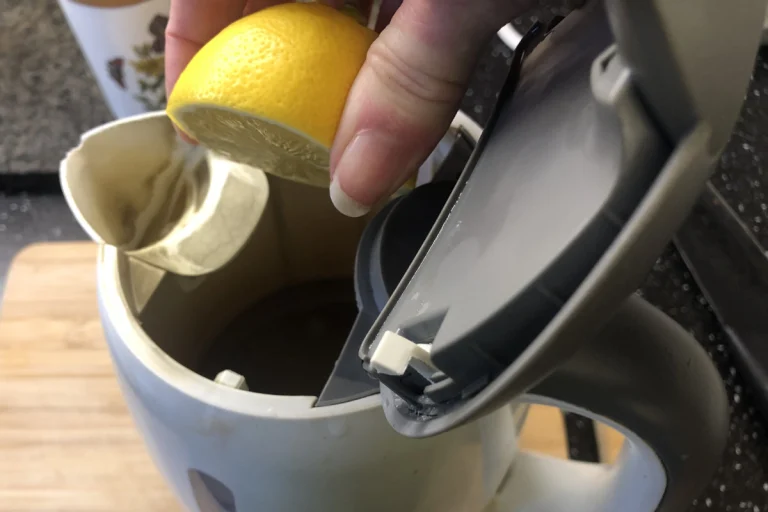
If you have a large lemon use one half of the juice, otherwise use the juice of the whole lemon.
If you are using bottled lemon juice, add a couple of tablespoons to the kettle.
Step 3 – Cut the lemon into chunks
Cut the lemon into chunks and add it to the kettle.
Step 4 – Add 500ml water to the kettle
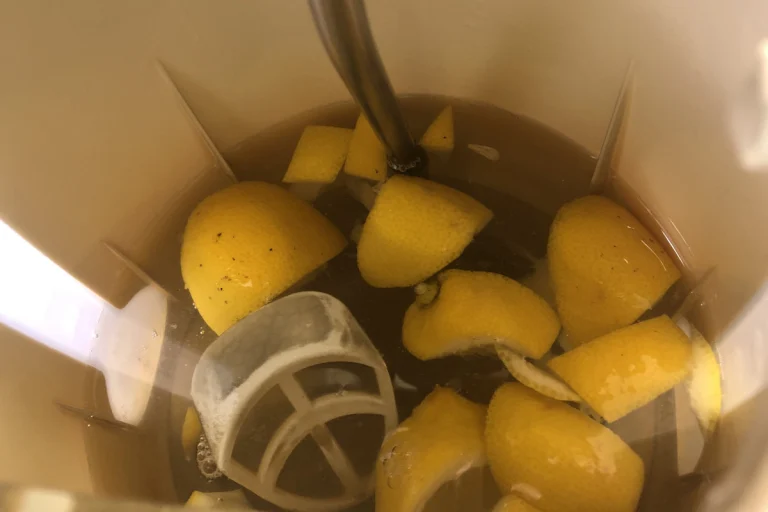
The water should go about halfway up the kettle, so use more or less depending on the size of your appliance.
In my case, the kettle filter was quite clogged up with limescale so I took it off and added it to the water so that it can get cleaned too.
Step 5 – Boil
Turn on the kettle and boil it.
Step 6 – Leave to cool for a couple of hours
Let the lemon water sit in the kettle for a couple of hours until it is cool.
Step 7 – Wipe the kettle inside and outside
Take a clean cloth or sponge and dip it into the water and wipe the inside so that any remaining residue is removed.
Wipe the outside to remove any watermarks and dirt.
Step 8 – Rinse and dry
Remove the lemon water and rinse with clean water. Then dry with a microfiber cloth or towel.
If your kettle is badly scaled up, you will need to do one or several more boils with the lemon water. You don’t need a new lemon, simply reboil and cool.
If you are concerned that you will have a lemony taste to your drink, boil one last time with some clean water.
The result
Here is the inside of my kettle after cleaning with lemon juice.
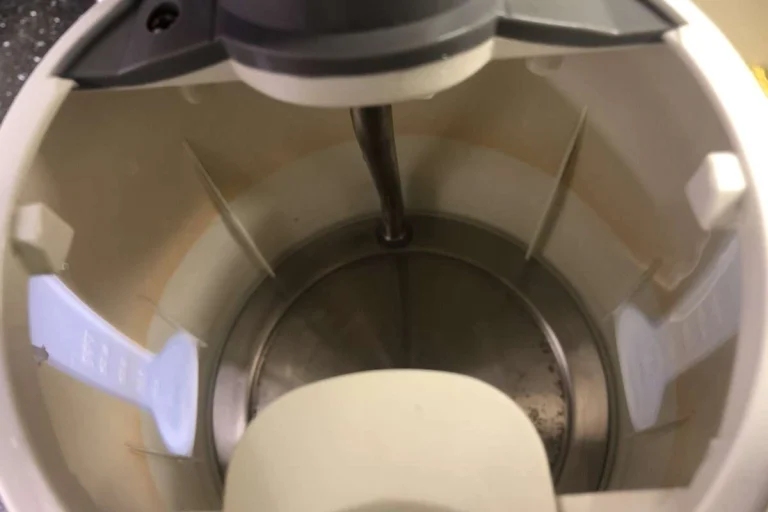
I left the lemon juice in the kettle for just half an hour. But still, you can see the line where the lemon water went up to. The next step will be to fill the water all the way and leave it for longer. As you can see, the base is nice and shiny.
I am so pleased with how easy this was, and all without chemicals!
Pro-tip: Don’t pour the lemon water away! Soak your tea-stained cups in the lemon water instead.
Related reading:
- How to clean a plastic cutting board with lemon
- How to clean a microwave with an orange (and no scrubbing)
- How to clean a plastic kettle
- How to make homemade dishwasher cleaner
How to clean a kettle on the outside
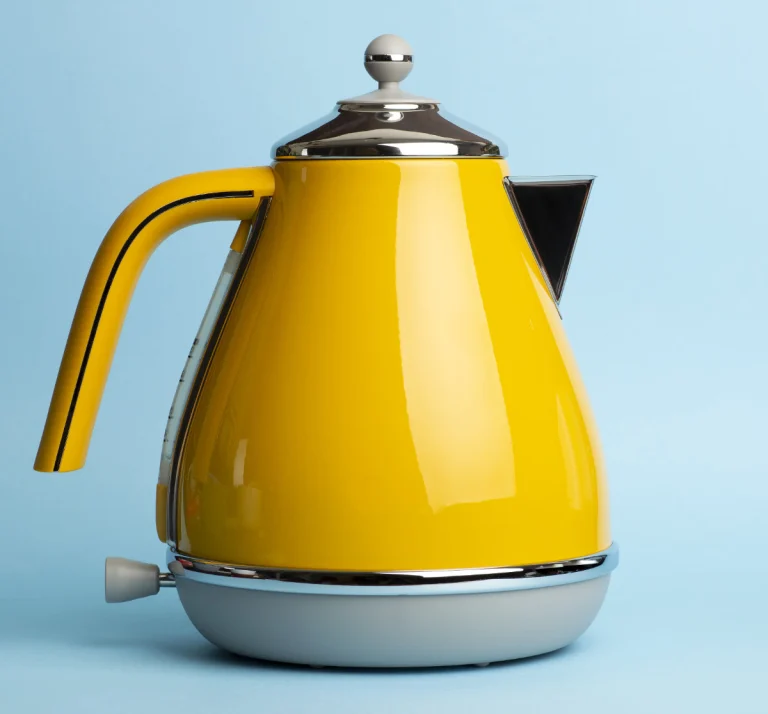
With regular use, the outside of your kettle and its base can get grimy.
Here’s how to get your kettle sparkling again:
- Unplug your kettle from the mains electricity.
- Take a clean microfiber cloth soaked in water and some dish soap. Wring out the cloth well (because you don’t want it soaking wet as you wipe).
- Wipe over the outside of the kettle and its charging base until you feel there is no friction as you wipe.
- Take another dry microfiber cloth and wipe it over again to dry and shine up the surface.
Always avoid submerging your kettle in water because the heating elements will be damaged.
How to clean the kettle filter
The filter in the spout of the kettle can usually be removed for cleaning. If that is the case, you can remove it and add it to the lemon water, so it can be descaled at the same time as the inside of the kettle.
To clean and descale your kettle filter separately:
- Remove it from the kettle.
- Soak it in some distilled white vinegar until the scaling dissolves.
- Use a cloth to rub it clean and then rinse and dry.
Other methods of cleaning the inside of a kettle naturally (without lemon)
Descaling your kettle with bicarbonate of soda (baking soda)
- Mix two teaspoons of baking soda or bicarbonate of soda and two cups of water.
- Add to your kettle and boil it.
- Leave it to cool and then rinse and wipe.
If your kettle is badly scaled up, boil the baking soda and water solution several times.
Related reading:
- How To Easily Descale A Kettle With Bicarbonate Of Soda
- How To Clean A Stainless Steel Sink With A Lemon
Descaling your kettle with vinegar
Vinegar is a very versatile and natural agent for cleaning your house. Did you know you could also use vinegar to descale and clean your kettle?
- Fill your kettle with equal parts of distilled white vinegar and water.
- Boil your kettle.
- Leave to cool.
- Drain and wipe.
Related reading:
- How Vinegar Kills Bacteria In Your Home
- Should You Use Vinegar or Bleach To Clean Your Washing Machine?
Descaling your kettle with coca-cola
Coca-cola contains phosphoric acid which makes it a very good cleaner for your kettle.
- Pour some coca-cola into your kettle.
- Boil.
- Leave to cool.
- Empty and then rinse with clean water.
- Fill with water and boil again to remove the taste of the cola.
How to prevent limescale in your kettle
If you are finding that your kettle regularly gets clogged up with limescale, here are some tips to help prevent the problem:
- Empty it after every use. After you use your kettle, empty the water or use it for something else such as watering your plants (once the water has cooled). If you live in a very hard water area, emptying it and drying it after use will prevent limescale buildup entirely.
- Get a water filter. Filtering your water before you put it in the kettle will improve the taste of the water and prevent scaling too. You can buy portable water filters or have a separate tap fitted on your sink.

- Get a water softener. A water softener removes the magnesium and calcium from the water which will reduce scaling in your kettle and in other appliances in your home too.
Frequently asked questions
Does lemon juice clean limescale?
Lemon juice is great for cleaning off hard water marks and limescale. This is because lemon juice is acidic. The acid in lemon juice reacts with the limescale causing it to dissolve without having to chip or scrub it off by hand.
The great thing about using lemon juice to clean off limescale is that it is a natural substance. If you use it to descale your kettle, for example, the worst thing that could happen is that your next cup of tea tastes a bit lemony.
Can you descale a kettle with coke?
Yes, you can clean your kettle with coca-cola! Simply add to your kettle and boil. Let it sit until it cools. Rinse and then reboil with clean water to remove the taste of the cola.
Can you descale a kettle with bicarbonate of soda?
Yes, you can clean your kettle with bicarbonate of soda, also known as baking soda. Add a couple of teaspoons of bicarbonate of soda or baking soda to your kettle and then top up with water. Mix and then boil your kettle several times. Finally, let your kettle cool and then rinse out the water and wipe with a cloth or sponge to remove the last remnants of limescale.
Can you descale a glass kettle with lemon juice?
Yes, you can clean and descale a glass kettle with lemon using the same method as for a stainless steel or plastic kettle. Cut a whole fresh lemon in half and squeeze the juice into the kettle. Cut up the flesh and add it to the kettle along with about half a litre of water. Boil the kettle and then leave it to sit for several hours or overnight depending on how scaled up your kettle is. Rinse and wipe. Your kettle should gleam again.

